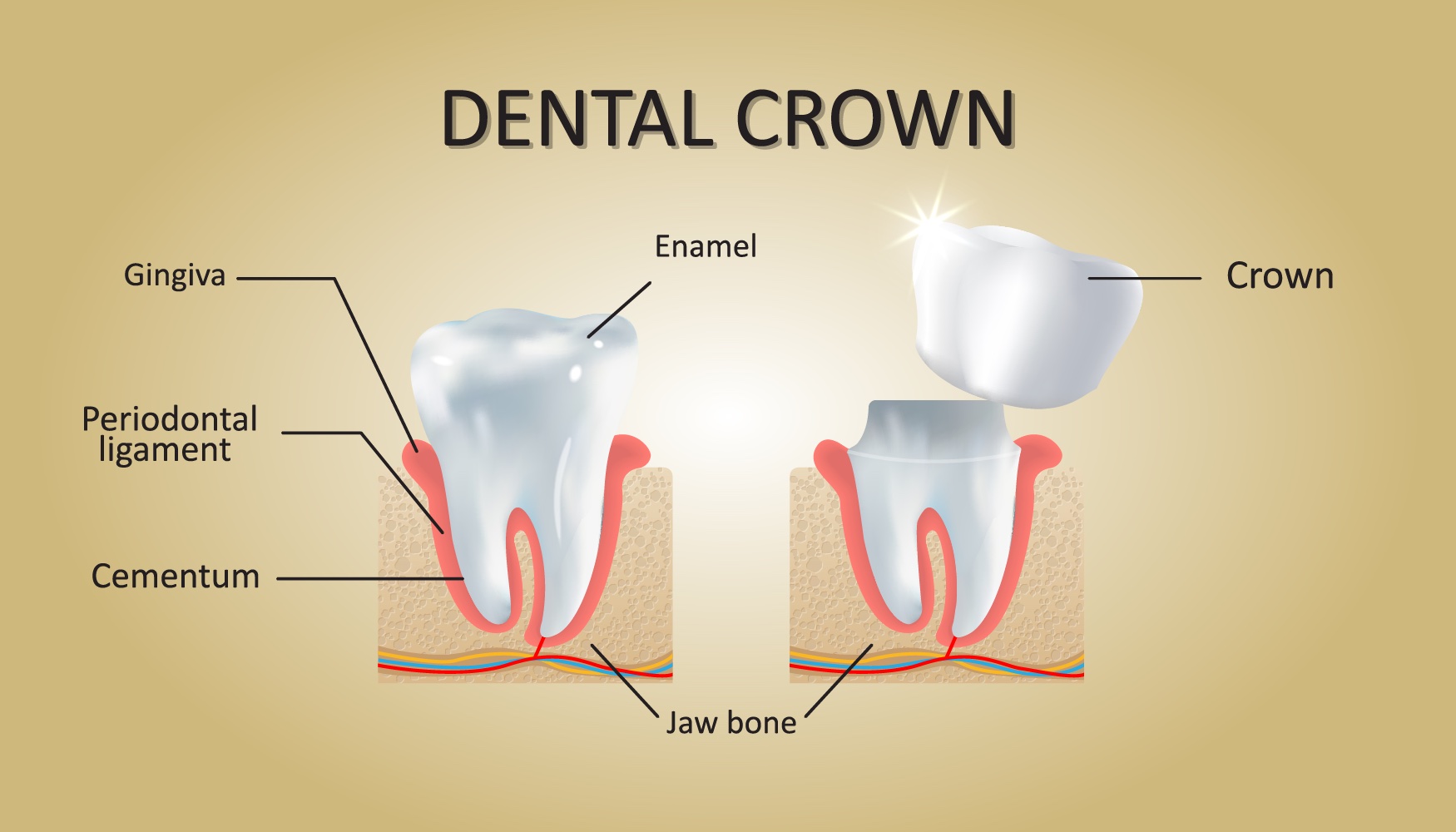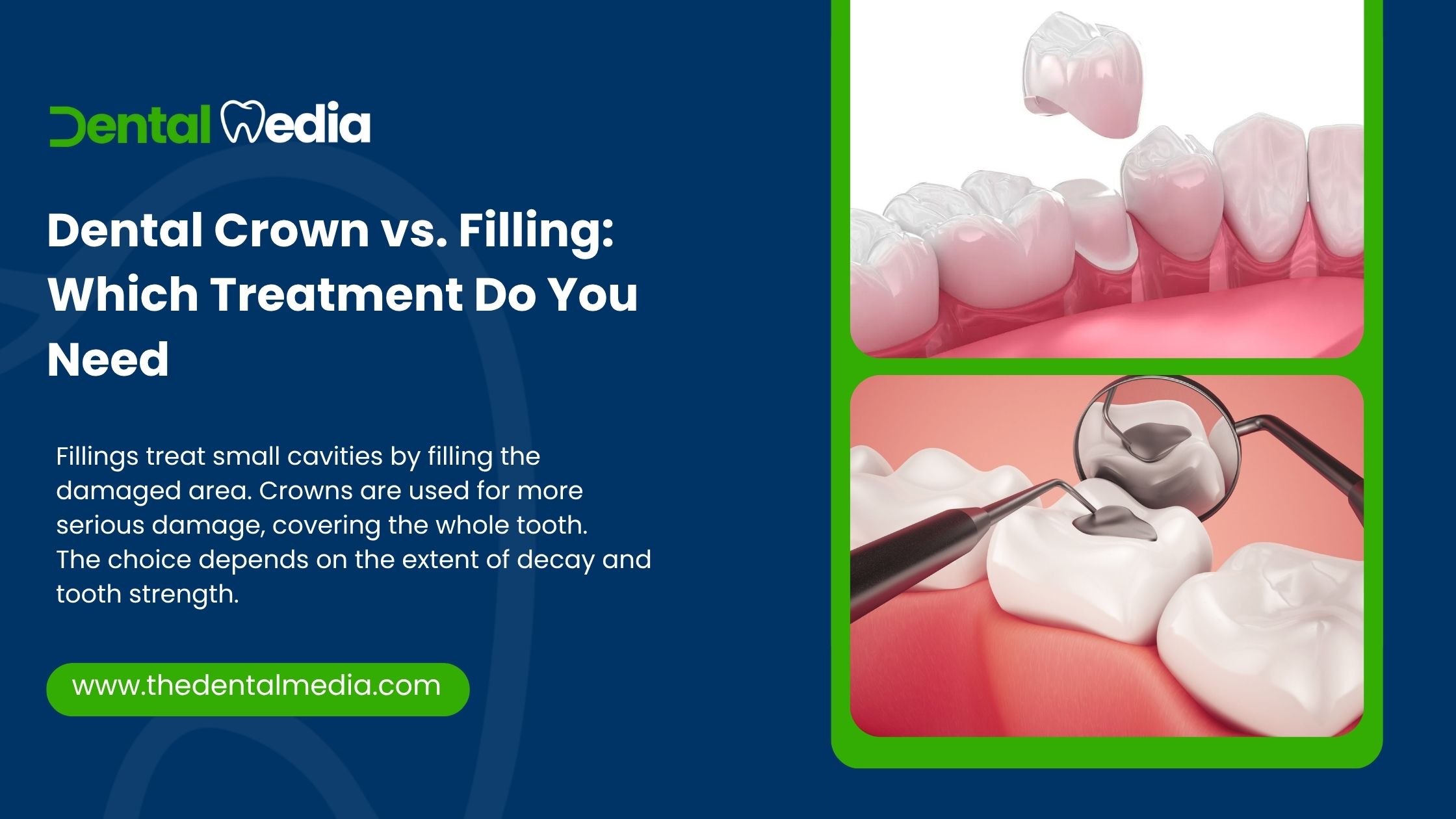When it comes to repairing damaged or decayed teeth, dental crowns and fillings are two of the most common restorative treatments. While both serve to restore tooth function and prevent further damage, they are very different in how they work and when they’re used Dental Crown vs. Filling.
Understanding the differences between crowns and fillings can help you make an informed decision about your dental care. This article breaks down everything you need to know.
What Is a Dental Filling?

A dental filling is used to repair minor tooth damage, such as small to moderate cavities or chips. The dentist removes the decayed portion of the tooth and fills the space with a material that restores the tooth’s shape and function.
Types of Filling Materials:
- Composite resin (tooth-colored and blends in)
- Amalgam (durable but silver-colored)
- Gold (long-lasting but more expensive)
- Ceramic or porcelain (aesthetic and durable)
When Fillings Are Used:
- Small to medium-sized cavities
- Slight tooth fractures
- Minor wear from grinding or erosion
- Quick and affordable repairs
Advantages of Fillings:
- Less tooth structure needs to be removed
- Usually completed in one visit
- Cost-effective
What Is a Dental Crown?

A dental crown is a custom-made cap that completely covers the entire visible portion of a tooth, restoring its shape, strength, and appearance. Crowns are used when a tooth is too damaged for a filling to be effective
Common Materials for Crowns:
- Porcelain or ceramic (natural appearance)
- Metal (gold or alloy) (very strong)
- Porcelain-fused-to-metal (PFM)
- Zirconia (very strong and tooth-colored)
When Crowns Are Needed:
- Large cavities that compromise tooth structure
- After a root canal treatment
- Cracked, broken, or severely worn teeth
- To anchor a dental bridge or cover an implant
- For cosmetic purposes when teeth are misshaped or discolored
Advantages of Crowns:
- Provides full coverage and protection
- Restores strength to weakened teeth
- Long-lasting with proper care
- Can dramatically improve appearance
Dental Crown vs. Filling: Key Differences
| Feature | Filling | Crown |
|---|---|---|
| Extent of damage | Minor to moderate | Moderate to severe |
| Coverage | Fills part of the tooth | Covers the entire tooth |
| Durability | 5–10 years (composite) | 10–15+ years (with good care) |
| Procedure time | Usually 1 visit | Typically 2 visits (unless same-day crown) |
| Cost | Lower | Higher |
| Strength added | Minimal | High |
| Cosmetic benefit | Moderate | High |
How to Know Which One You Nee
Your dentist will evaluate several factors to determine the right treatment, including:
- Size and depth of decay
- Location of the tooth (front or back)
- Remaining tooth structure
- Cosmetic concerns
- Bite pressure in that area
- Patient budget and preferences
General Rule of Thumb:
- If most of the tooth is still intact → Filling
- If a large portion of the tooth is damaged or missing → Crown
What Happens If You Choose the Wrong Treatment?
Opting for a filling when a crown is actually needed can lead to:
- Tooth fracture
- Recurrent decay under the filling
- Increased sensitivity
- Need for more extensive treatment later
Conversely, placing a crown when a simple filling would suffice may result in unnecessary cost and loss of healthy tooth structure.
Aftercare Tips for Fillings and Crown
- Brush and floss daily
- Avoid hard or sticky foods (especially after treatment)
- Visit your dentist regularly for checkups
- Use a nightguard if you grind your teeth
Conclusion
Both dental crowns and fillings are effective ways to restore damaged teeth—but they serve different purposes. Fillings are ideal for small repairs, while crowns provide full protection for severely damaged or weakened teeth. The best choice depends on the extent of the damage, your long-term goals, and your dentist’s expert recommendation.
For more help and support, feel free to contact us at TheDentalMedia.com.

